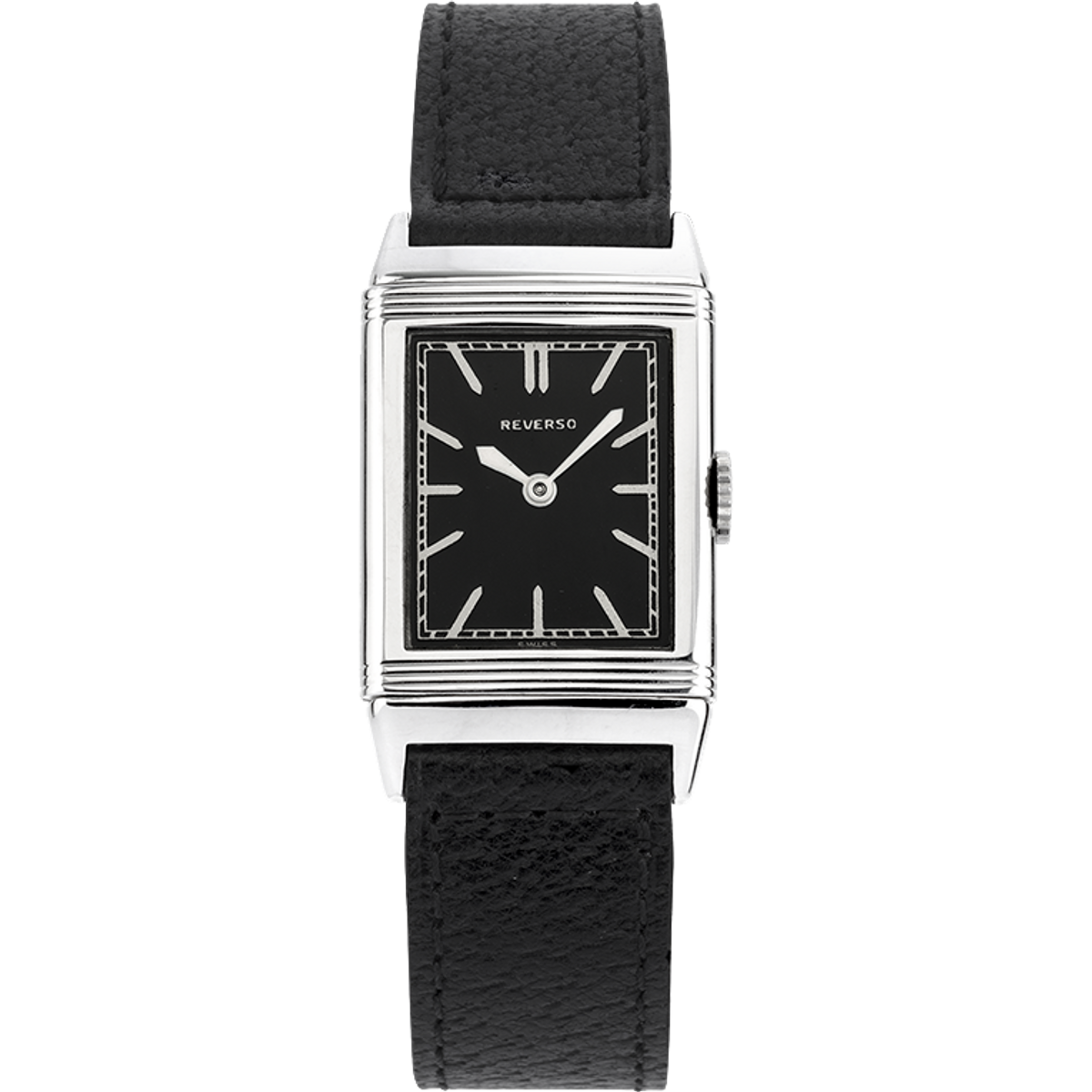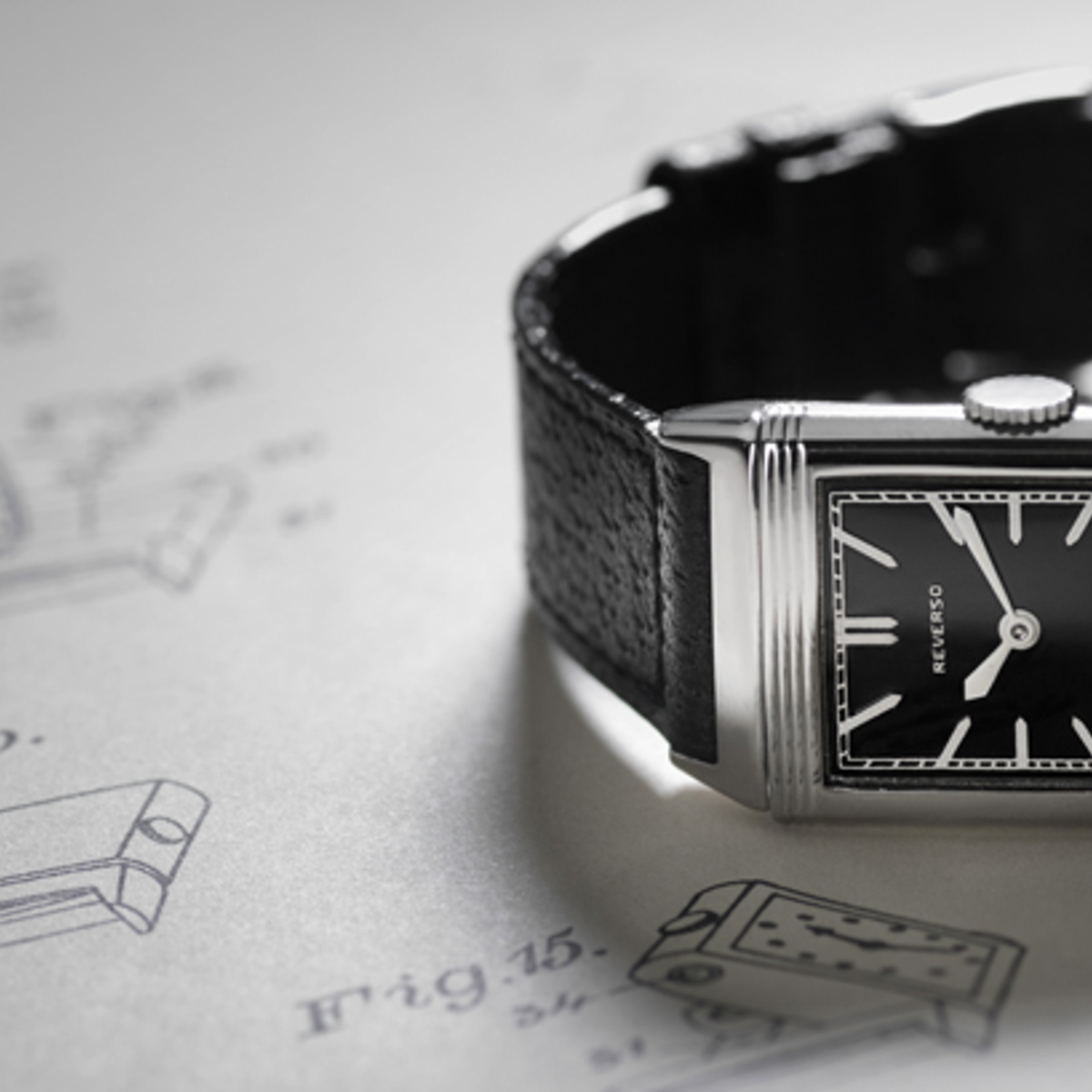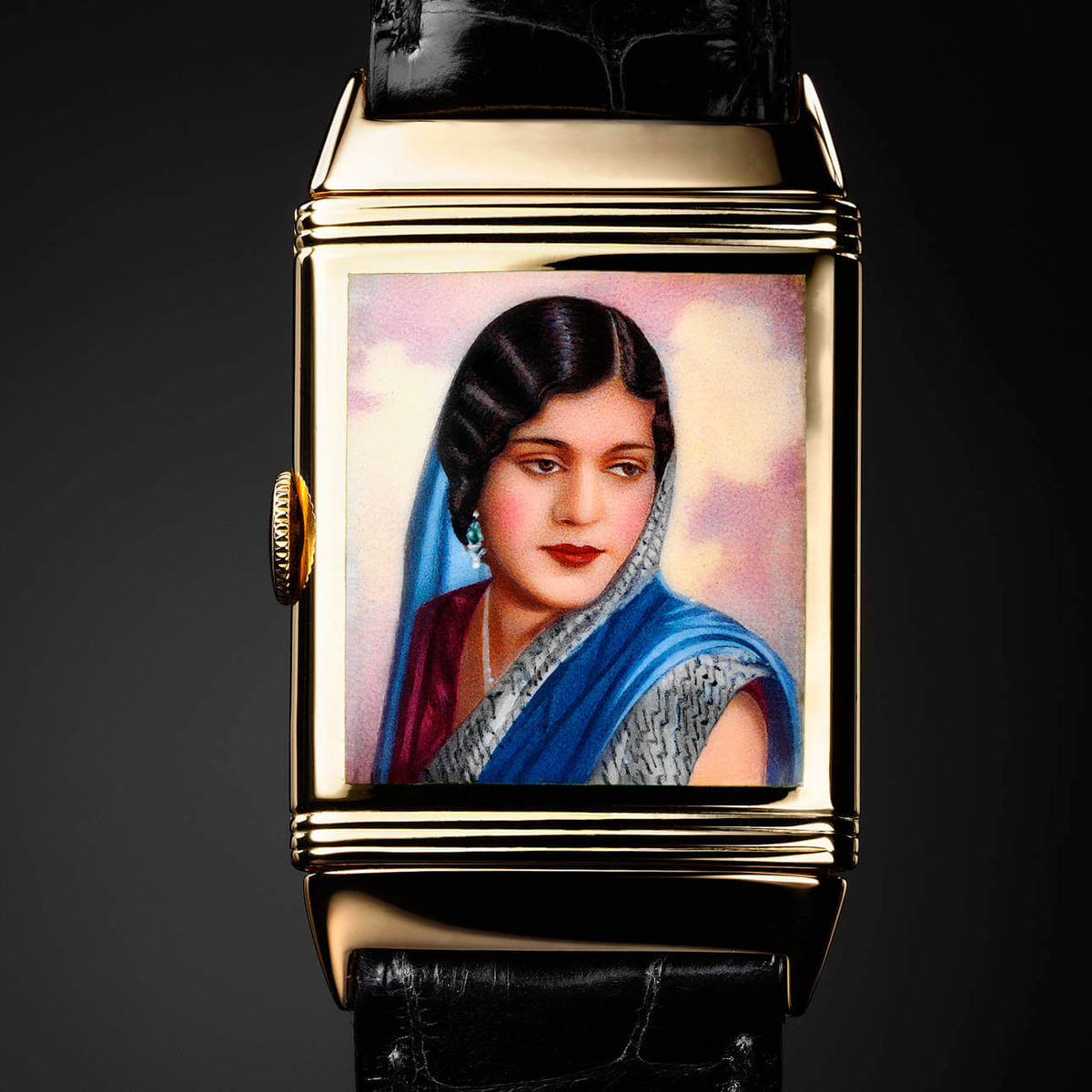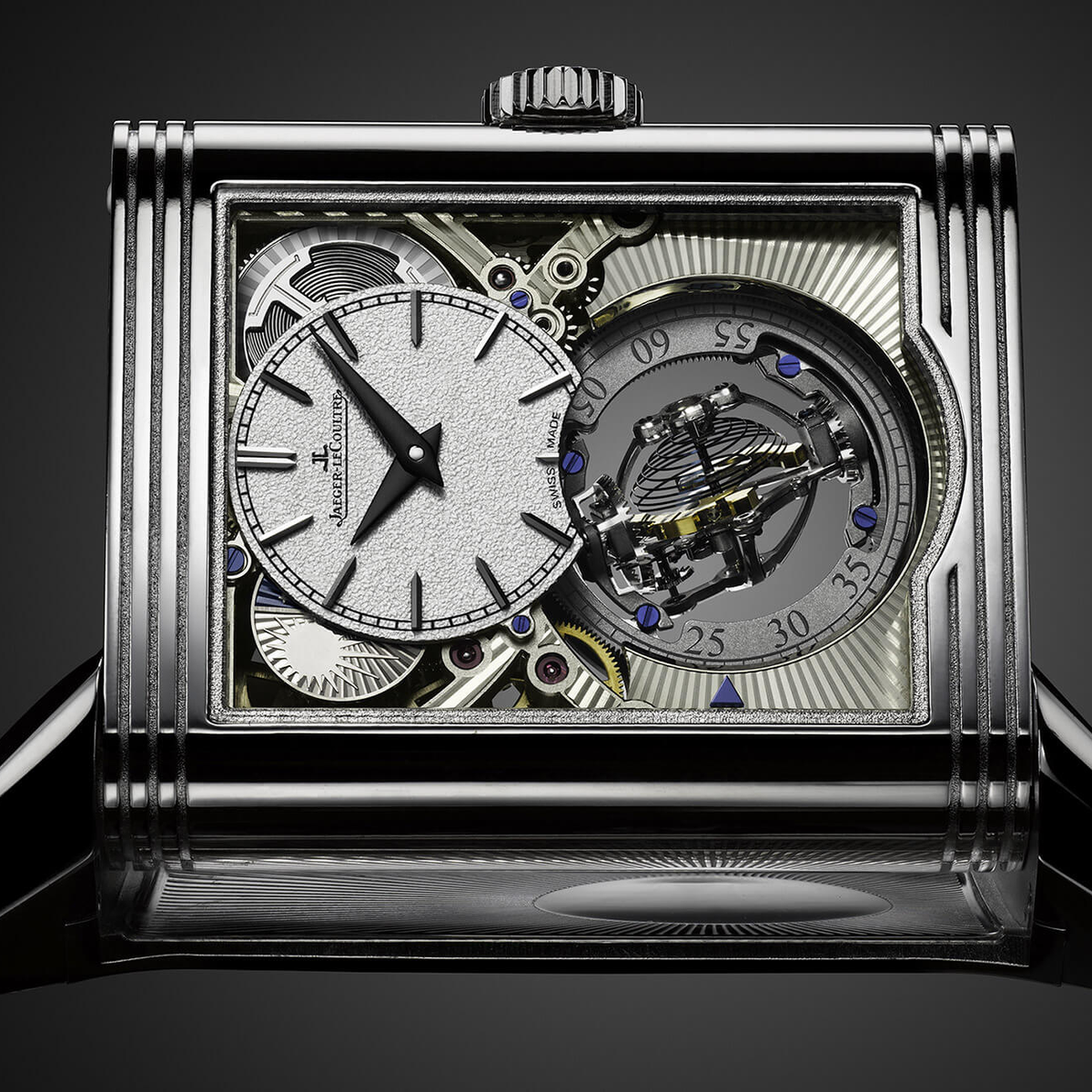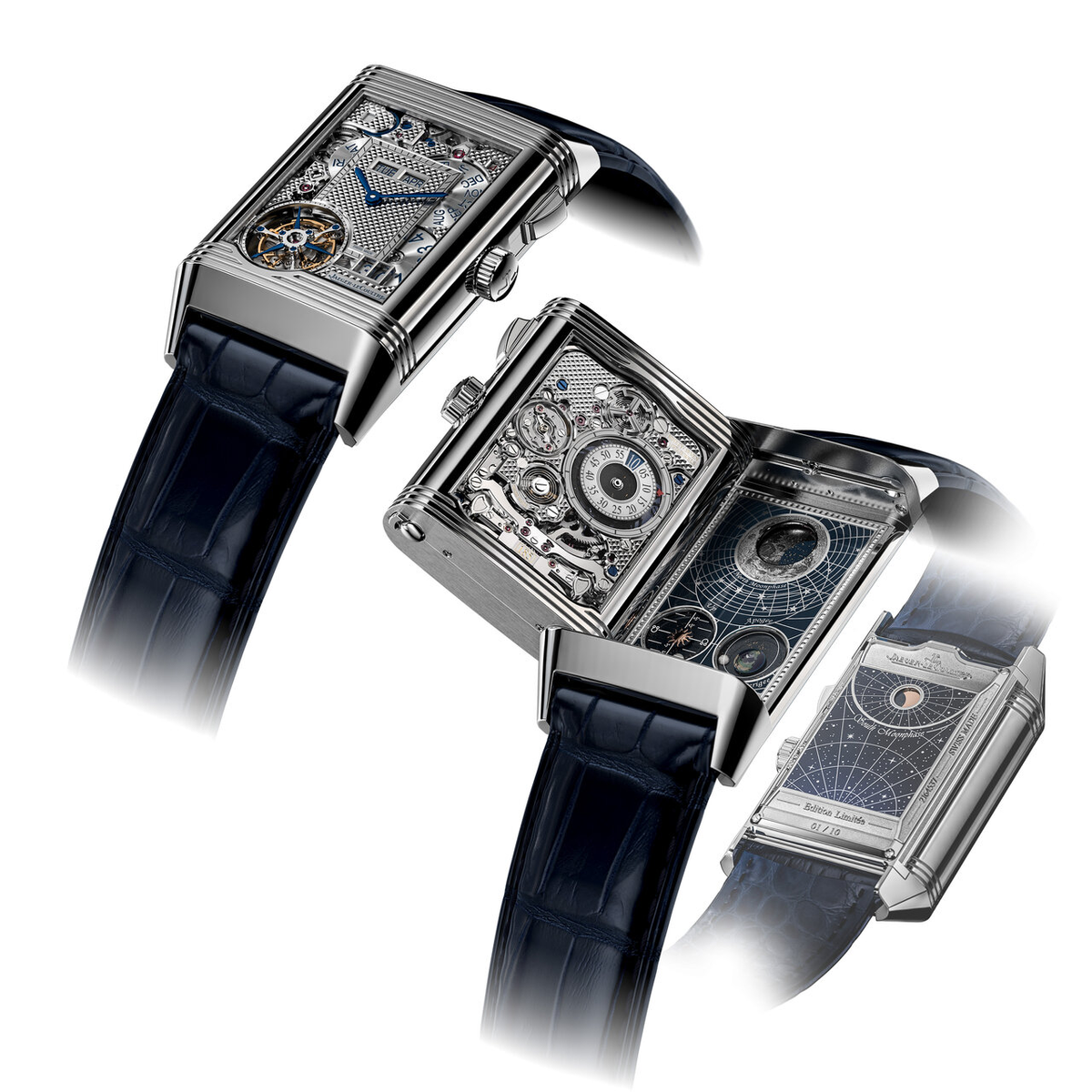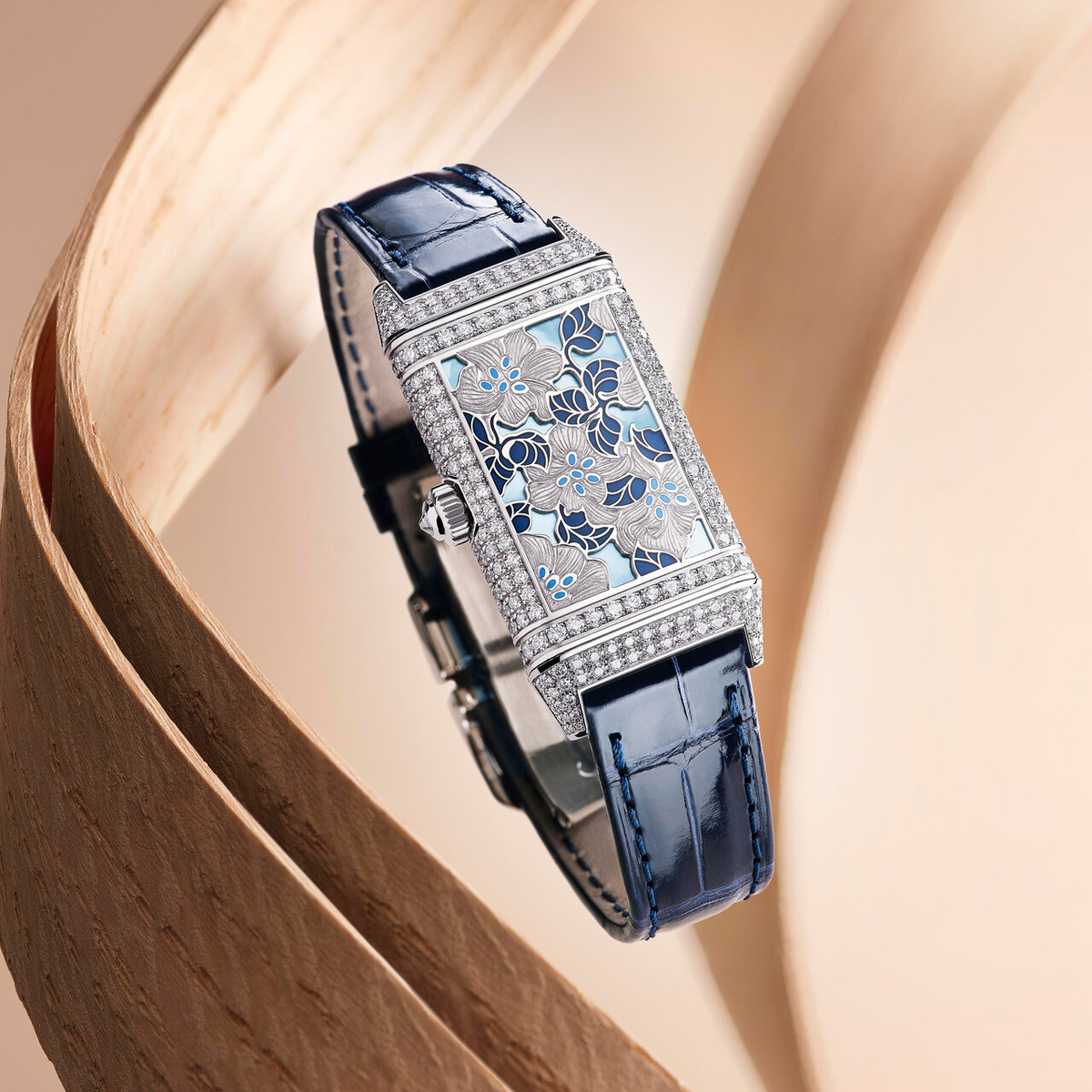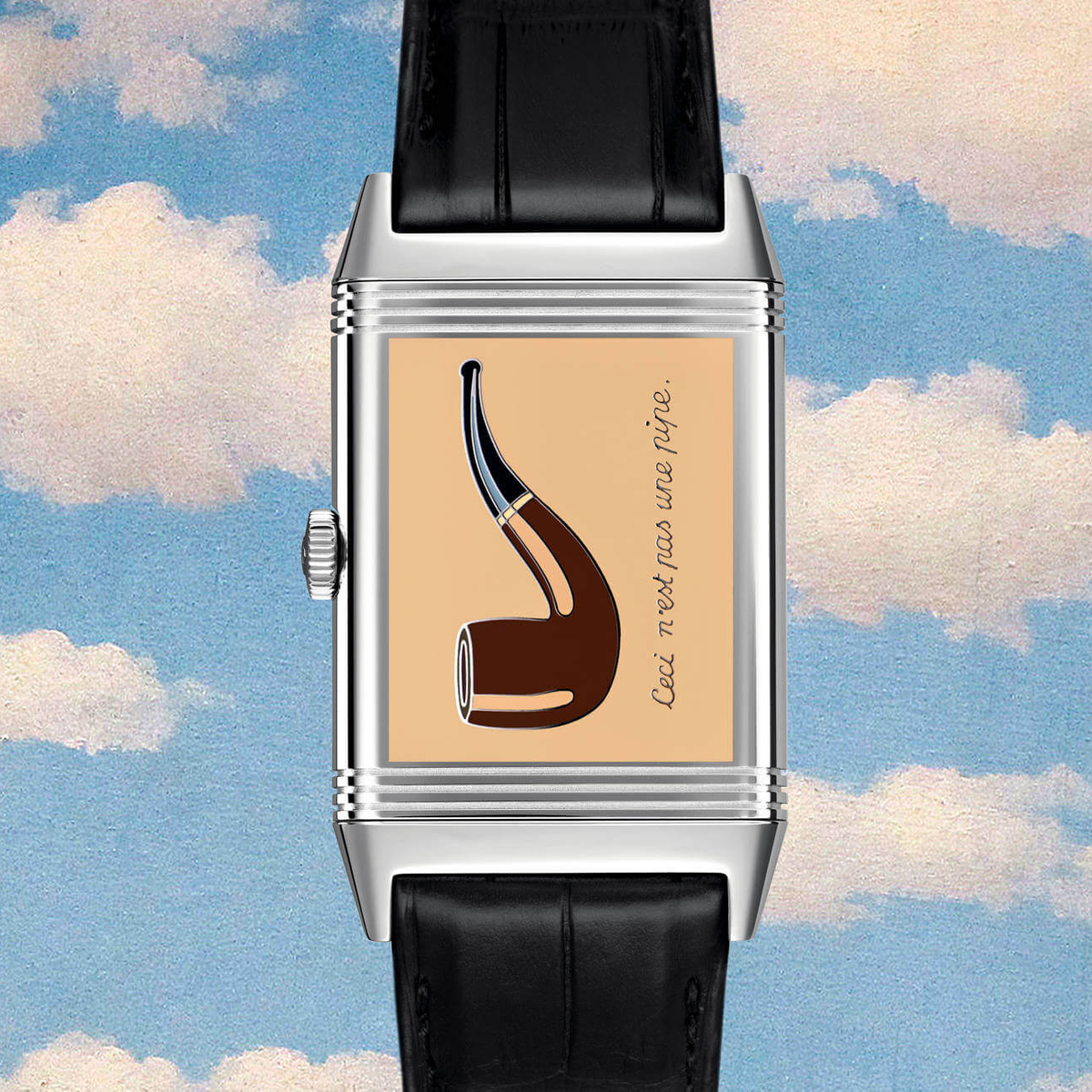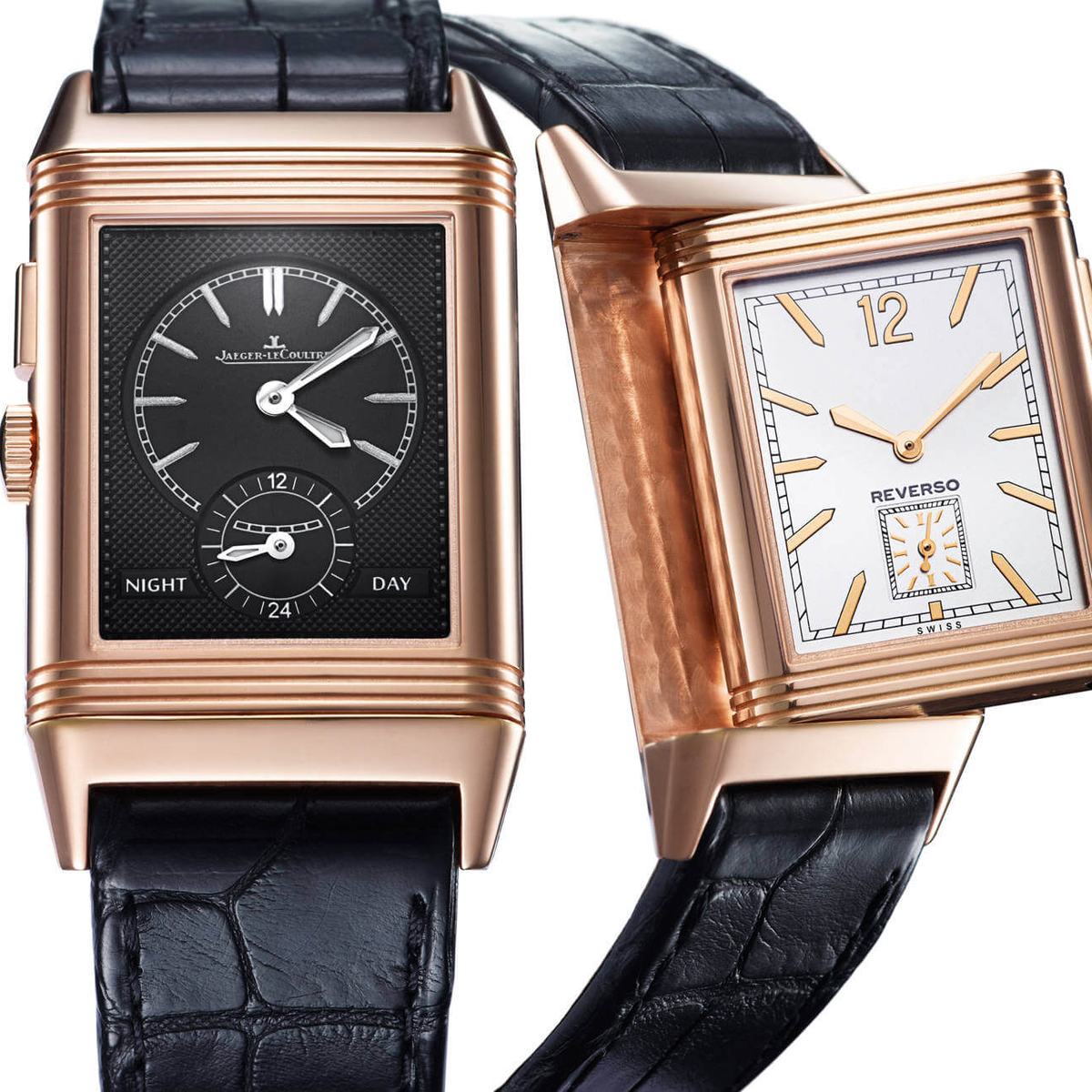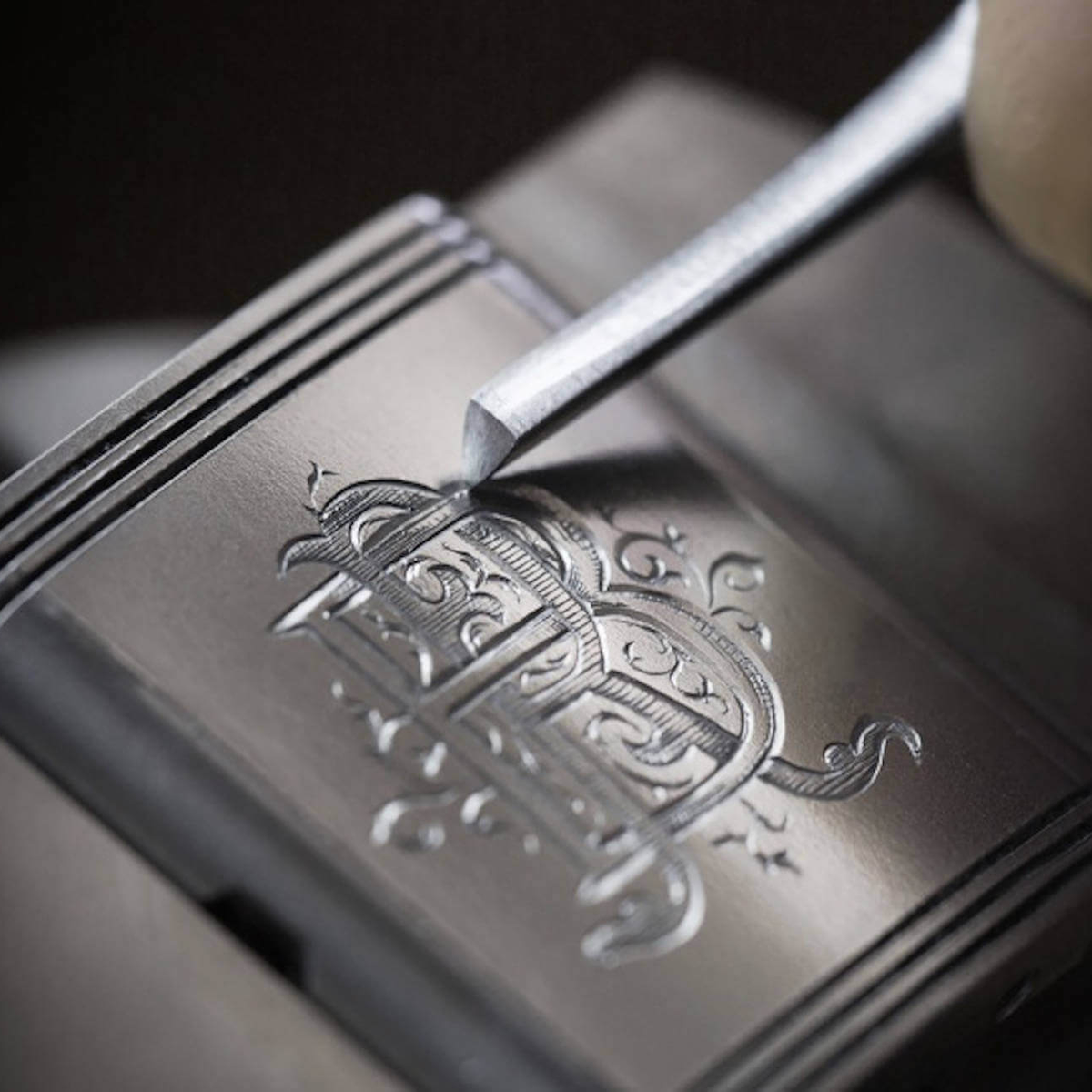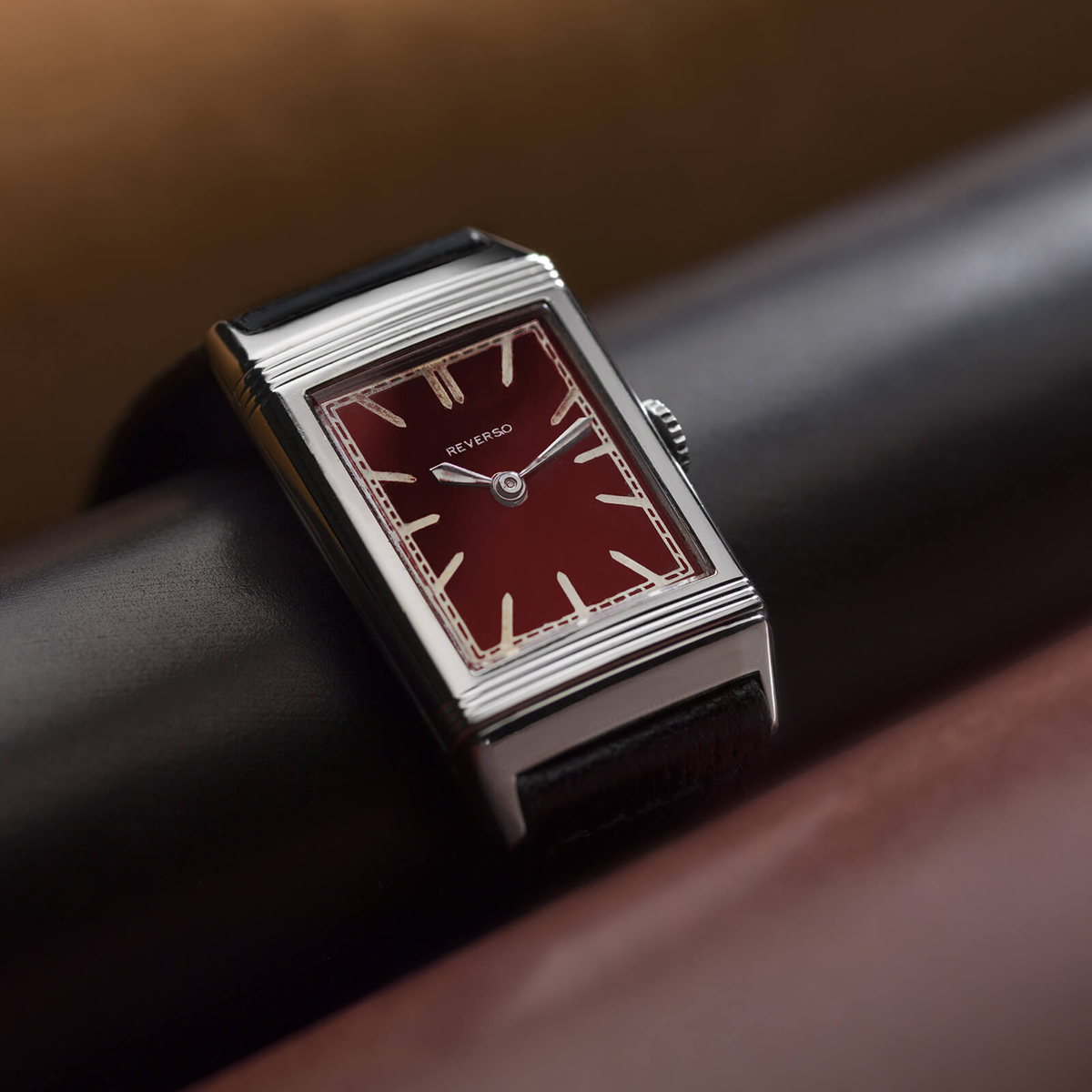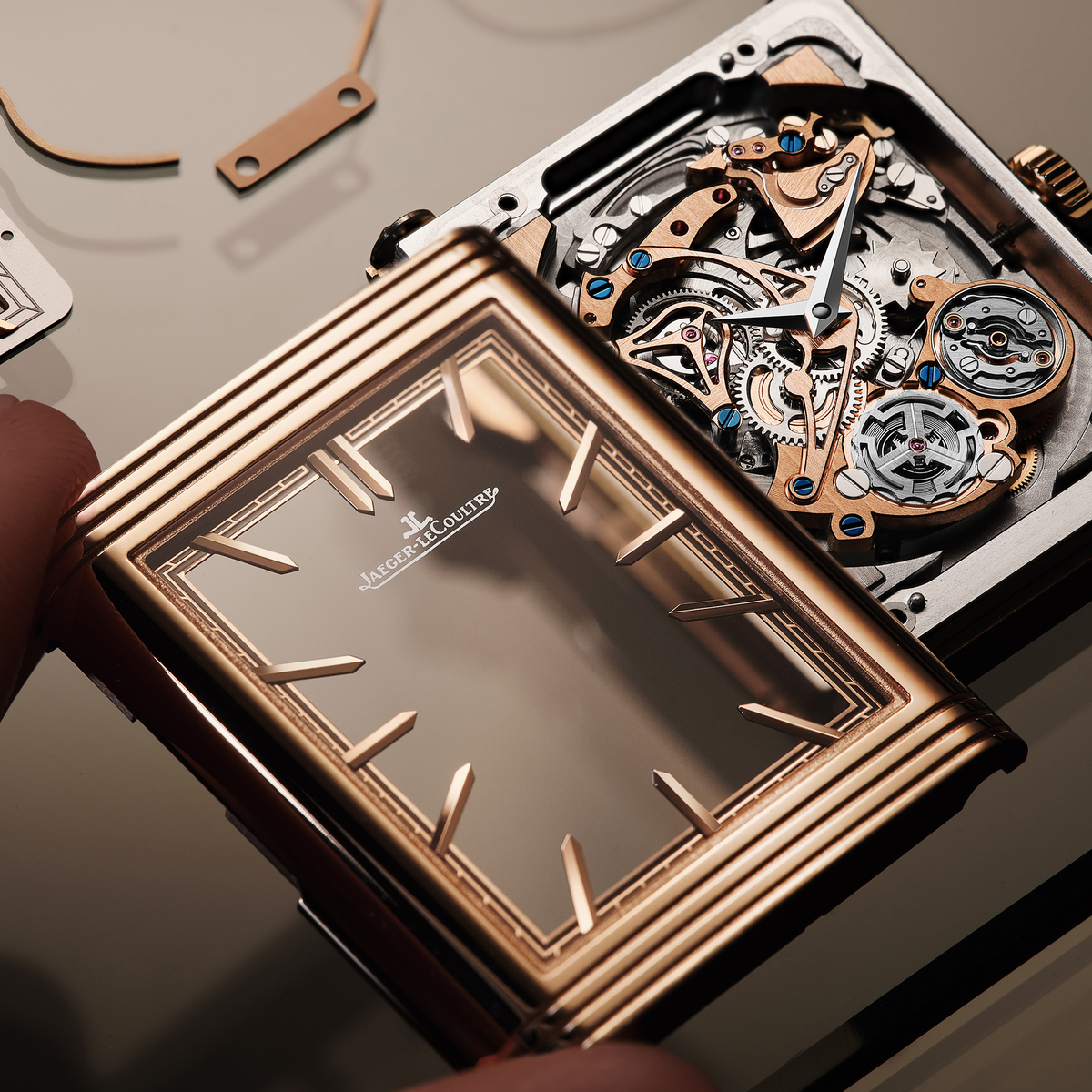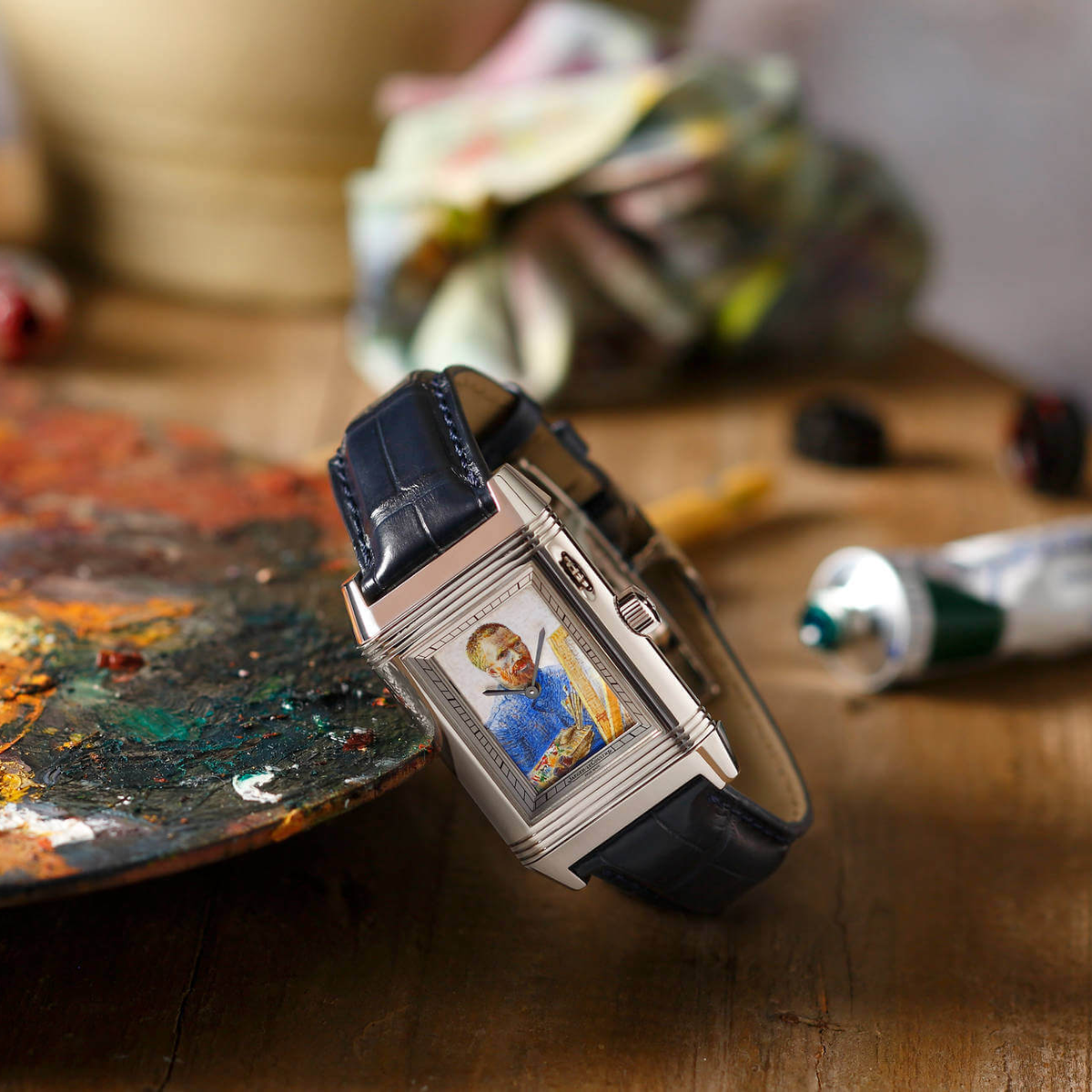It was clear that the Reverso would be adopted by a wide audience.
Launch Year
1931
Functions
hours, minutes
Movement
mechanical
Distinctive features
rectangular watch with patented reversible case
The Reverso was born in response to a request made by a polo player – an officer of the British colonial army in India – to a certain César de Trey, a Swiss businessman involved in promoting watchmaking. The player, who had just shattered the glass of his watch during a match, challenged de Trey to come up with one that could withstand impacts. The latter entrusted the task to French engineer Alfred Chauvot, who imagined a watch "capable of swivelling by sliding in its base", patented in 1931. Named Reverso, it was equipped with a dedicated LeCoultre movement – rectangular in shape, like all those to follow – and marketed by a company distributing Jaeger and LeCoultre products.
It was clear that the Reverso would be adopted by a wide audience, especially since the reverse side, designed as a protective shell once the case swivelled, provided great scope for customisation. Engravings were followed by miniature enamel paintings. The earliest recorded example dates back to 1936 and features a portrait of an unknown Indian beauty. As of 1996, these enamel decorations were produced in-house, thanks to a watchmaker who had taken the personal initiative to learn and master this art, striving to achieve the required quality. Diamond-set Reverso models appeared in the 1970s. Today, they are crafted within the Manufacture by artisans who use not only traditional techniques, but also inventive methods developed in the early 2000s: snow setting and rock setting.
For its 60th anniversary, the Reverso was equipped for the very first time with a complication movement. The 1991 creation known as the Reverso 60e, featuring a power-reserve display and a date hand, inaugurated a series of six limited editions that continued with the Reverso Tourbillon in 1993, Répétition Minutes in 1994, Chronographe Rétrograde in 1996, Géographique in 1998 and Quantième Perpétuel in 2000. These developments paved the way for the spectacular achievements of the 21st century such as the Grande Complication à Tryptique (2006), the Gyrotourbillon 2 (2008), the Répétition Minutes à Rideau (2012) and the Tribute Gyrotourbillon (2016).
At the same time, the consequences of the horological revolution of the 1990s were felt in the regular collection with the advent, in 1994, of the Duoface back-to-back dial concept - an idea that seems self-evident, yet required the development of an original, tailor-made movement. Fundamentally useful, the Reverso Duoface models reinterpret the dual-time display by showing local time on one side and home time on the other. Three years later, the concept was adopted by women as the Reverso Duetto.
In the 2000s and 2010s, the Reverso began exploring whole new dimensions. For its 70th anniversary, it appeared in a larger version. The Grande Reverso – not to be confused with the Reverso Grande Taille, which is part of the usual size hierarchy – is characterised by an exceptional eight-day autonomy ensured by twin-barrel calibres.
For its 75th anniversary, the Reverso turned square. At the age of 80 it acquired remarkable slenderness with the Grande Reverso Ultra Thin, while its 85th year saw a new twist to personalisation. Thanks to Atelier Reverso, customisation no longer applies only to solid casebacks, but also to the second dials of the Duoface and Duetto models. Jaeger-LeCoultre set its sights higher still for the Reverso’s 90th anniversary. Already in 2007 the “Grande Maison” had unveiled the Reverso Grande Complication à Triptyque; the first wristwatch to show civil time with a tourbillon on one display; sidereal time with an equation of time on a second display and, on a third display, perpetual time with a calendar incorporated into the carriage of the pivoting case. Following on from this exceptional timepiece, 2021 saw the most complicated Reverso ever: the Hybris Mechanica Calibre 185 with four displays – a world-first. Endowed with 11 complications, it combines a perpetual calendar, tourbillon and minute repeater with unusual astronomical indications such as the synodic, draconic and anomalistic cycles of the moon, a means of predicting solar and lunar eclipses, and rare phenomena such as super moons… with no adjustment required in 1,111 years.
